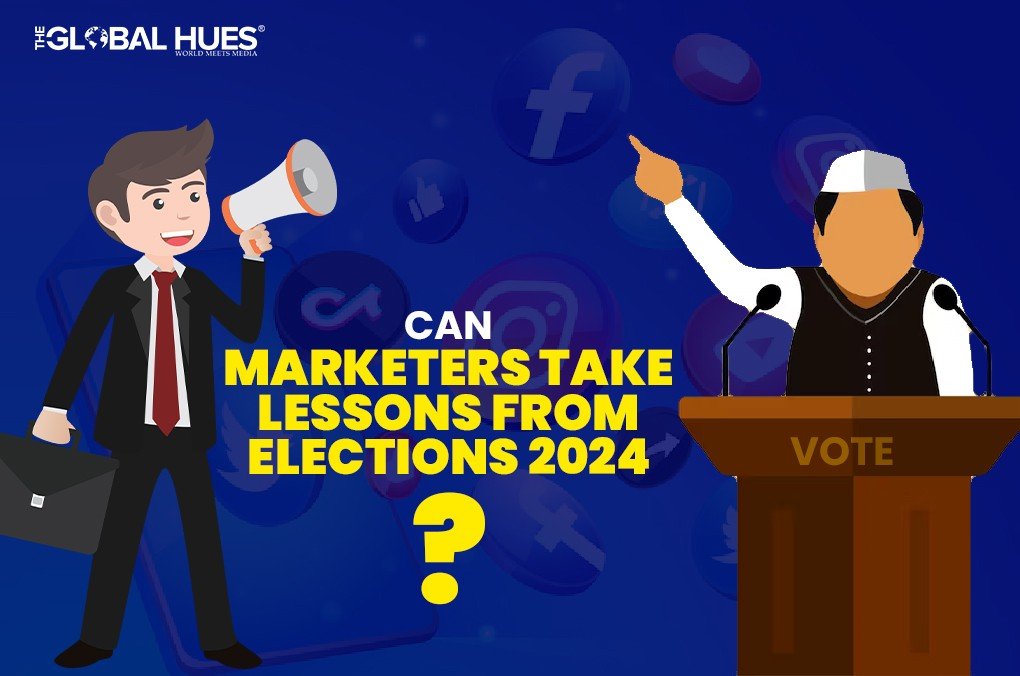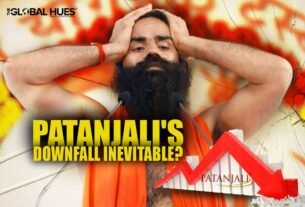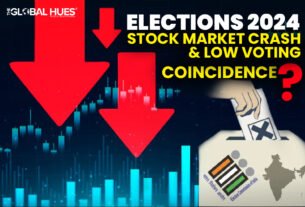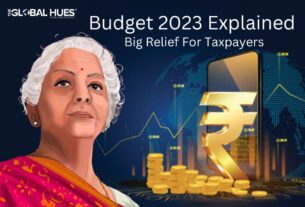Discover
-
Budget spending on advertisements by political parties
-
How Jawaharlal Nehru, Rajiv Gandhi (“Brand Gandhi”), Narendra Modi (“Brand Modi”) nailed at creating their own brands
-
What are the different marketing lessons to take from above two and other strategies?
India is currently in its elections fever. Each political party is trying every strategy to emerge victorious in the elections.
To win elections, they’ve got some savvy strategies up their sleeves, and it’s not just about plastering posters on walls anymore.
From using social media to nailing on the aspect of personal branding, campaigns by political parties have evolved a lot. But what can businesses learn from the election playbook 2024?
Let’s take a closer look at the lessons gleaned from the hustle and bustle of Indian elections and how they can be applied to the world of business.
Marketing Lessons To Learn from the Indian Elections
Political Parties often follow a multifaceted strategy for the elections. It amalgamates traditional media, digital media platforms, emotive appeals, and grassroots mobilisation.
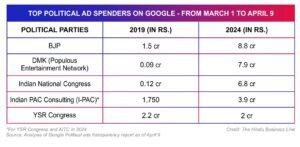
SPENDING BIG ON ADVERTISEMENTS
BJP kept a head start and started making election-related image and video ads in January 2024. According to statistics, a total of 8.8 crores was spent on political advertisements on Google from March 1 to April 9 2024.
Additionally, the majority of the party’s ads were directed towards Uttar Pradesh, Odisha, and Andhra Pradesh. However, gearing up for PM Modi’s visit to Chennai on April 9, 27 per cent of the BJP’s digital ad spend between April 1 and April 9 were in Tamil Nadu at over 14 lakhs. Likewise in terms of video, 84 per cent of the BJP’s ads from March 1- April 9 are video ads across various regional languages carrying the messaging of ‘Phir ek baar Modi Sarkar’ (Once more Modi rule).
On the other hand, The Indian National Congress (INC) had spent 6.8 crore during the campaigning process. Over 50 per cent of this was spent during April 5-9 alone and 2 crore ad spends were recorded on April 7. Most of INC ads were targeted in the regions of Maharashtra, Bihar, Madhya Pradesh and Rajasthan.
Lesson to Learn for Businesses:
Advertising is key to reaching your audience and getting them to remember your brand. It’s all about timing, knowing your audience, and using the right platforms to get your message across.

Moreover, BJP is trying to engage with the voters by sending them a personalised, ‘Letter from the Prime Minister’ on Whatsapp. It has over 500 million active users monthly in India. Furthermore, these personalised letters highlight the achievements of Narendra Modi. It also seeks feedback from voters.
Moreover, Congress also runs a Rahul Gandhi Whatsapp Group. In the group, the leader interacts with people and responds to their queries.
Lesson to Learn for Businesses:
Businesses can use WhatsApp as an emerging digital platform to engage with audiences in a personalised manner.
They can send exclusive offers, promotions, and sneak peeks of new products or services to your loyal customers. This creates a sense of exclusivity and incentivises customers to stay connected with the brand on WhatsApp.
Also Read: Stock Market Crash & Low Voting. Coincidence?
SOCIAL MEDIA INFLUENCERS
BJP leaders like S Jaishankar, Smriti Irani, Piyush Goyal, and Rajeev Chandrasekhar have given interviews to podcaster Ranveer Allahabadia. He has over 7 million followers on YouTube. Likewise, Congress leader Rahul Gandhi joined Kamia Jani. She is the founder of Curly Tales, a travel and food video podcast, for a candid conversation over a meal.
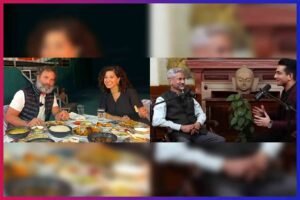
This helps political leaders to tap into the influencer’s existing follower base, which often spans millions of users. This allows them to extend their reach beyond traditional media channels and connect with younger, digitally-savvy audiences.
Lesson to Learn For Businesses:
Just as political leaders choose influencers whose audience aligns with their target demographic, businesses should identify influencers whose followers are likely to be interested in their products or services.
They can ask influencers to engage with their followers and start conversations that matter. This makes the whole experience more personal and trustworthy for viewers, thus they’re more likely to buy your products or services.
SOCIAL MEDIA
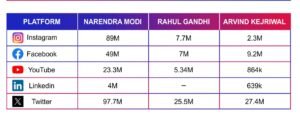
To connect with young people, political parties use social media a lot. They post short reels, pictures, and collections of videos. These posts often use popular memes and sometimes make fun of the other party.
Lesson to Learn For Businesses:
Businesses should also use social media to connect with younger consumers. They can make use of interactive media like reels and audio to help the customer understand their products or services. This eventually prompts them to inquire more.
PERSONAL BRANDING
Every Indian Prime Minister becomes like a brand, especially in a competitive environment. They create an image among people using how they appear in public, the policies they follow, and how they talk, all carefully planned.

Jawaharlal Nehru always wore jackets, which became very connected to his name. Indira Gandhi had a special look with a streak of white hair starting from her forehead. She wore many different traditional Indian clothes. It showed she was very experienced, especially when she was competing with older members of her political party. Rajiv Gandhi wore smart and casual clothes, sometimes different from what other politicians wore. It made him popular with young people and showed he was thinking about the future.
Today, Narendra Modi is always changing how he appears to people. He wears many different types of clothes, from fancy suits to sporty outfits like ones you’d wear for snorkelling. PM Modi’s persona has evolved over the years.
Personal branding plays a key role in elections campaigns. It allows positioning and differentiation from other candidates. It is a powerful tool to build trust and garner support from the electorate. By carefully curating their image and message, they leave a lasting impact on voters’ perceptions. It ultimately influences electoral outcomes.
Lesson to Learn For Businesses:
Businesses should focus on personal branding. They must identify their unique value proposition and effectively communicate it to their target audience to stand out in a crowded marketplace.
Trust is a cornerstone of successful personal branding. By prioritising transparency, integrity, and customer-centricity, businesses can foster trust and loyalty among their customer base. This drives repeat business and positive word-of-mouth referrals.
Also Read: Who Will Lead India? What’s at Stake for Businesses?
Rallies and Roadshows in Elections
Along with social media, parties are also harnessing their on-ground popularity by organising rallies and roadshows. They are also prioritising grassroots-level mobilisation to consolidate support for them at the grassroots. Let’s take the example of the BJP, one of their campaign titled, ‘Vote ki Guarantee.’
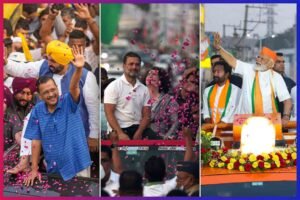
BJP’s campaign titled, ‘Pehla Vote Modi Ko’ appeals to the young voters who will be voting for the first time in Elections 2024.
On the other hand, Congress will launch the two-pronged strategy— “Sewa ke sau saal” and “Rae Bareli ke Rahul.” These will be soon launched through publicity material and social media posts before Rahul begins his campaign.
Lesson to Learn For Businesses:
Businesses should not rely solely on online platforms but also invest in offline events and community outreach. They can benefit from engaging with local communities, supporting grassroots initiatives, and building relationships with customers on a personal level.
Also Read: How Is Print Advertising Better In The Digital Age?
Summing Up
So, the dynamic strategies employed by political parties during the Indian elections offer valuable lessons for businesses. This would help them succeed in today’s competitive marketplace. From allocating budget to advertisements to focusing on creating a strong brand image, political parties do it all. The question is – How can your business use these strategies to stand out and succeed in a crowded market?
Frequently Asked Questions:
What are the examples of political advertising?
Political advertising includes various types of messages that aim at persuading people to vote for a candidate. These messages can appear on billboards, in newspapers, on TV or radio, online, or through other forms of communication.
What does campaign mean in politics and elections?
A political campaign is a planned effort to sway the opinions or decisions of a certain group of people. In places where people vote for their leaders, like democracies, these campaigns are usually about choosing who will represent them or deciding on important issues through votes.
What are the types of advertising in political campaigns and elections?
Different types of advertising in political campaigns include:
calls, billboards, emails, radio and television ads, social media ads, and more.
Which one is the famous advertising campaign?
De Beers launched this simple slogan in 1947 and amazingly, it’s still going strong today. It is one of the longest-running advertising campaigns ever.

